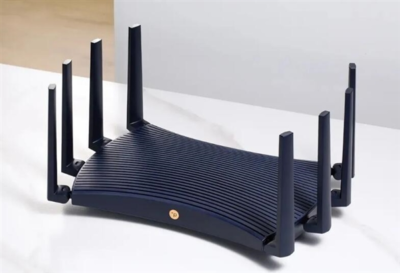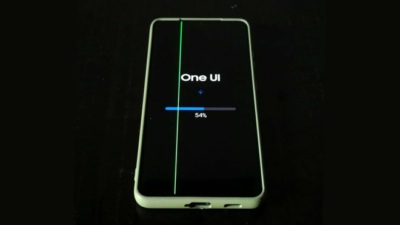Micron B58R with 232 layers: the most advanced 3D NAND starts production

Micron begins mass production of 232-layer NAND. NAND flash memory for products like SSDs and smartphones is the most advanced of its kind, and Micron backs this up with impressive detail. In May, Micron first presented its 3D NAND with more than 200 layers, while the competition is still producing up to 176 layers in series.
The number of levels alone doesn’t say much about features such as performance and cost; nevertheless, Micron also has an edge beyond the number of layers. This is now supported by more details that Micron is revealing at the same time as the start of mass production of the 232-layer NAND, also known as B58R.
The highest areal density for TLC NAND
In one of the most important parameters, which is areal density (bits per area), Micron is ahead of the competition. For the first time, TLC-NAND (3 bits per cell) with a storage capacity of 1 Tbit per die is mass-produced, previously only offered by QLC chips with 4 bits per cell. At the same time, Micron is now also committed to the highest areal density to date of 14.6 Gbit/mm².
That’s another 35 percent more than the previous leader, SK Hynix’s 512Gb, 176-layer, 10.8Gbps TLC NAND. Microns thus almost reach the level of QLC-NAND with the highest areal density, as shown in the diagram below. Storage Density of 3D NAND (Green: TLC, Orange: QLC, Blue: SLC)
- Kioxia/WD BiCS6 162L (QLC, 1Tb)
- SK Hynix V7 176L (QLC, 1Tb)
- Micron 232L (TLC, 1TB)
- Intel 144L (QLC, 1TB)
- SK Hynix V7 176L (TLC, 512Gb)
- Kioxia/WD BiCS6 162L (TLC, 1Tb)
- Intel/Micron 96L (QLC, 1TB)
- Kioxia/WD BiCS4 96L (QLC, 1.33Tb)
- Samsung V7 176L (TLC, 512GB)
- YMTC 128L (TLC, 512Gb)
- SK Hynix V5 96L (QLC, 1Tb)
- Kioxia/WD BiCS5 128L (TLC, 512Gb)
- SK Hynix V6 128L (TLC, 512Gb)
- Samsung V5 92L (QLC, 1TB)
- Intel/Micron 96L (TLC, 512Gb)
- Kioxia/WD BiCS4 96L (TLC, 512Gb)
- Samsung V6 128L (TLC, 512GB)
- Samsung Z-NAND 48L (SLC, 64Gb)
- Intel/Micron 3D XPoint (SLC, 128Gb)
Unit: Gigabit per mm² The areal density for the expected QLC variant of Micron’s 232-layer NAND is not yet known, but it should be an absolute record. At just 11.5 x 13.5 mm, the chip housing (package) that houses the 3D NAND chips is also 28 percent smaller than the manufacturer’s 176-layer package (B47R), explains Micron. This is the smallest high-density NAND available. This reduces “the space on the board for a variety of uses”.
The new architecture
Micron again uses two stacked layer towers (array or string stacking), one of which consists of 116 layers. With 176-layer NAND, two 88-layer towers are used accordingly. It is not known whether Micron was able to reduce the thickness of the layers again. It has long been common for the logic circuits to be located at their own level below the memory layers (CMOS under Array, CuA) to save space.
As is known, the performance benefits from dividing the NAND matrix into different regions, the so-called planes. Throughput increases due to the parallel access to multiple planes. Until now, a maximum of 4 patches has been common for TLC-NAND, but Micron is increasing this to 6 for 232-layer NAND. Significantly increase the performance of the NAND flash.
ONFI 5.0 at 2,400 MT/s
With the latest version of the Open NAND Flash Interface (ONFI 5.0), the I/O throughput increases from the already high 1,600 MT/s in the 176L generation from Micron to 2,400 MT/s and thus by no less than 50 percent. No competitor’s 3D NAND can achieve this either. By the end of the year, Kioxia plans to increase BiCS6-NAND and Samsung to just 2,400 MT/s in the next generation V-NAND V8. TLC 3D-NAND in comparison.
At the chip level, Micron’s new 3D-NAND should read data up to 75 percent faster and write data up to 100 percent faster thanks to these adjustments. However, Micron does not mention specific values. Others have always disclosed such details at the annual ISSCC, where Micron has been long gone.
But Micron’s 176-layer NAND is currently the number one choice for high-end SSDs in the customer area. While SSDs like the Corsair MP600 Pro (test) with a Phison E18 controller was already very fast, the combination with Micron’s fast 176-layer NAND aka B47R provided even more performance, as SSDs like the Seagate FireCuda 530 (test) show. SSDs with the equally fast Innogrit IG5236 controller also go a step further with the Micron NAND. The expectations of the successor are therefore high.
ONFI 5.0 is not only faster
The new ONFI 5.0 standard at 2,400 MT/s also includes the NV-LPDDR4 interface, which reportedly saves about 30 percent energy with a lower voltage per transmitted bit. Because of this and the high areal density and small space requirements, the new Micron-NAND is also particularly suitable for “mobile applications and deployments in the data center and on the intelligent edge”, according to the manufacturer. However, there is backward compatibility to support older controllers, for example.
Availability and first finished products
Micron states that the 232-layer NAND has already been delivered to customers. At the same time, products of the subsidiary brand Crucial are equipped with it. What those are, however, has yet to be clarified. ComputerBase received information about this article from Micron under NDA. The only requirement was the earliest possible publication date.
Research Snipers is currently covering all technology news including Google, Apple, Android, Xiaomi, Huawei, Samsung News, and More. Research Snipers has decade of experience in breaking technology news, covering latest trends in tech news, and recent developments.











